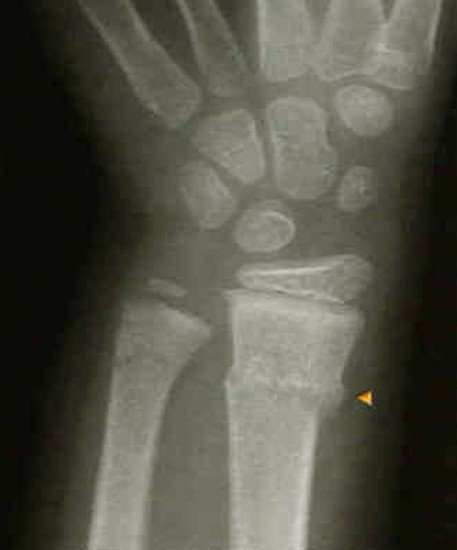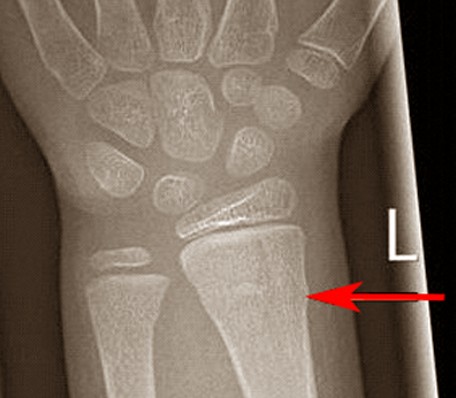Buckle Fracture
Last reviewed by Dr. Raj MD on January 12th, 2022.
What is a buckle fracture?
It is a type of fracture that affects the side of a bone making the side of the bone bend outward but it does not fully break. It is also referred to as a torus fracture. It is a type of fracture that is often compared to a greenstick fracture in which with this type of fracture one side of the bone bends outward and the other side of the bone breaks. The difference between the two is that when you have a buckle fracture it does now bow out. It is a fracture that you will commonly see in children, especially during the phase when their bones are still growing and their bones are still soft unlike adults who bones are harder. The buckle fracture is one that is also found in most elderly people after falling, especially involving the radius and ulna bones in their forearms and the bone in their wrist because their bones are fragile.
Symptoms
- Pain
- Nruising
- Swelling
- When move the affected area they have an uncomfortable feeling
Causes of Buckle Fracture
There are many different types with each one having a different cause as to why it happened. These include buckle fractures of the:
- Radius and ulna – approximately fifty percent of fractures that children and the elderly have are this type of buckle fracture.
- This is because they are so carefree and seem to fall a lot as they run, play, and jump with their arms outstretched. These are the two bones found in your forearms.
- Wrist – this is one of the more common condition or problem in a child’s wrist because when a child falls most of the time they extended their hands for support when they fall so they can try to catch themselves. This type of buckle fracture accounts for approximately thirty percent all fractures that occur in children and the elderly.
- Finger – this is not as serious buckle fracture nor as common as other buckle fractures. Having a fractured finger will prevent the range of motions in that finger, especially the fine motor movements.
A buckle fracture can also happen because of trauma such as a car wreck or being hit by something heavy called blunt force trauma.
Diagnosis
The most common way to diagnosis a buckle fracture is by having an x-ray taken. The x-ray can diagnosis if it is a buckle fracture and if not, what type of fracture it is and how severe it is. If the physician cannot get a positive diagnosis as to whether it is a buckle fracture or not they may have a CT scan or MRI done.
Treatment
Most buckle fractures are treated by splinting or casting them. To treat a buckle fracture you will have to see an orthopedic physician before any treatment is done. This is the physician who has specialized in treating different bone problems, including fractures. The bones will naturally heal by themselves but to keep the area immobilized and prevent further damage and to help it heal properly the orthopedic physician will splint or cast the injured area.
There are three main treatments that are used to treat buckle fractures which are:
Pain management
As soon as the bone is fractured there is pain and it is very uncomfortable especially with children and the elderly. Your orthopedic physician will usually prescribe over-the-counter non-steroidal anti-inflammatory (NASIDs) like ibuprofen and acetaminophen to help with the pain. The orthopedic physician may give you a prescription for stronger pain medication if needed but it depends on the age of the child.
Immobilization
This is an important part of healing because it helps in the normal healing process of the fractured bone by keeping it from moving. Casting or splinting will make sure that the bone is aligned properly so it will heal correctly. Before it is cast or splinted the orthopedic physician will make sure that the bone is aligned correctly. When a cast is used it is normally a soft cast. Casting also will help reduce the swelling and in turn reduce the pain.
Surgery
With buckle fractures surgery is not usually necessary because this type of fracture can be treated by using immobilization.
Healing time
When a child has this type of fracture it will usually heal within three weeks but they may have to take it easy for a little longer until the orthopedic physician says they can return to being very active again.
Buckle Fracture Pictures
Collection of pictures of Buckle Fracture…


